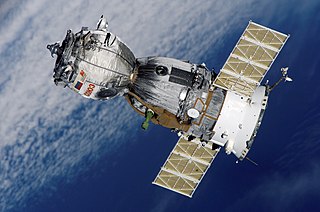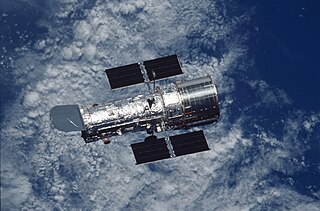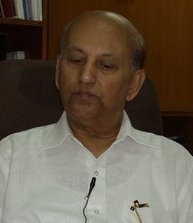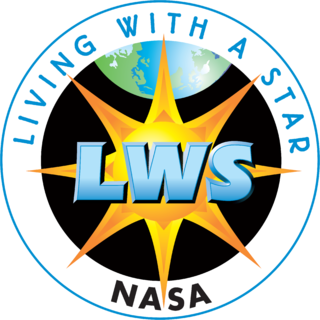
The Pioneer programs were two series of United States uncrewed space missions for lunar and planetary exploration. The first program, which ran from 1958 to 1960, unsuccessfully attempted to send spacecraft to orbit the Moon, successfully sent one spacecraft to fly by the Moon, and successfully sent one spacecraft to investigate interplanetary space between the orbits of Earth and Venus. The second program, which ran from 1965 to 1992, sent four spacecraft to measure interplanetary space weather, two to explore Jupiter and Saturn, and two to explore Venus. The two outer planet probes, Pioneer 10 and Pioneer 11, became the first artificial objects to leave the Solar System, and carried a golden plaque depicting a man and a woman and information about the origin and the creators of the probes, in case any extraterrestrials find them someday.

Space Shuttle Challenger was the second orbiter of NASA's Space Shuttle program to be put into service, after Columbia. Challenger was built by Rockwell International's Space Transportation Systems Division, in Downey, California. Its maiden flight, STS-6, began on April 4, 1983. The orbiter was launched and landed nine times before breaking apart 73 seconds into its tenth mission, STS-51-L, on January 28, 1986, resulting in the death of all seven crew members including a civilian school teacher.

Pioneer 10 is an American space probe, launched in 1972 and weighing 258 kilograms, that completed the first mission to the planet Jupiter. Thereafter, Pioneer 10 became the first of five artificial objects to achieve the escape velocity that will allow them to leave the Solar System. This space exploration project was conducted by the NASA Ames Research Center in California, and the space probe was manufactured by TRW Inc.

Spaceflight is ballistic flight into or through outer space. Spaceflight can occur with spacecraft with or without humans on board. Yuri Gagarin of the Soviet Union was the first human to conduct a spaceflight. Examples of human spaceflight include the U.S. Apollo Moon landing and Space Shuttle programs and the Russian Soyuz program, as well as the ongoing International Space Station. Examples of uncrewed spaceflight include space probes that leave Earth orbit, as well as satellites in orbit around Earth, such as communications satellites. These operate either by telerobotic control or are fully autonomous.

Astronautics is the theory and practice of travel beyond Earth's atmosphere.

James Alfred Van Allen was an American space scientist at the University of Iowa. He was instrumental in establishing the field of magnetospheric research in space.

The National Space Society (NSS) is an American international nonprofit 501(c)(3) educational and scientific organization specializing in space advocacy. It is a member of the Independent Charities of America and an annual participant in the Combined Federal Campaign. The society's vision is: "People living and working in thriving communities beyond the Earth, and the use of the vast resources of space for the dramatic betterment of humanity."

Joseph Percival "Joe" Allen IV, Ph.D. is a former NASA astronaut. He logged more than 3,000 hours flying time in jet aircraft.

Charles Gordon Fullerton was a United States Air Force colonel, a USAF and NASA astronaut, and a research pilot at NASA's Dryden Flight Research Facility, Edwards, California. His assignments included a variety of flight research and support activities piloting NASA's B-52 launch aircraft, the Boeing 747 Shuttle Carrier Aircraft (SCA), and other multi-engine and high performance aircraft. Fullerton, who logged more than 380 hours in space flight, was a NASA astronaut from September 1969 until November 1986 when he joined the research pilot office at Dryden. In July 1988, he completed a 30-year career with the U.S. Air Force and retired as a colonel. He continued in his position of NASA research pilot as a civilian. Fullerton and his wife and their two children lived in Lancaster, California.

Robert Franklyn "Bob" Overmyer was an American test pilot, naval aviator, aeronautical engineer, physicist, United States Marine Corps officer and USAF/NASA astronaut. Overmyer was selected by the Air Force as an astronaut for its Manned Orbiting Laboratory in 1966. Upon cancellation of this program in 1969, he became a NASA astronaut and served support crew duties for the Apollo program, Skylab program and Apollo-Soyuz Test Project. In 1976, he was assigned to the Space Shuttle program and flew as pilot on STS-5 in 1982 and as commander on STS-51-B in 1985. He was selected as a lead investigator into the Space Shuttle Challenger disaster and retired from NASA in 1986. Ten years later, Overmyer died in Duluth, Minnesota while testing the Cirrus VK-30 composite homebuilt aircraft.

Udupi Ramachandra Rao was an Indian space scientist and chairman of the Indian Space Research Organisation. He was also the Chairman of the Governing Council of the Physical Research Laboratory at Ahmedabad and Nehru Planetarium at Bengaluru and chancellor of the Indian Institute for Space Science and Technology (IIST) at Thiruvananthapuram.

Pioneer H is an unlaunched unmanned space mission that was part of the US Pioneer program for a planned 1974 launch. Had this mission and spacecraft been launched, it would have been designated Pioneer 12; that designation was later applied to the Pioneer Venus Orbiter.

Maria T. Zuber is a member of the National Science Board and the Vice President for Research at the Massachusetts Institute of Technology, where she also holds the position of the E. A. Griswold Professor of Geophysics in the Department of Earth, Atmospheric and Planetary Sciences. Zuber has been involved in more than half a dozen NASA planetary missions aimed at mapping the Moon, Mars, Mercury, and several asteroids. She is currently the principal investigator for the Gravity Recovery and Interior Laboratory (GRAIL) Mission, which is managed by NASA's Jet Propulsion Laboratory.

Living With a Star (LWS) is a NASA scientific program to study those aspects of the connected Sun-Earth system that directly affect life and society. LWS is a crosscutting initiative with goals and objectives relevant to NASA's Exploration Initiative, as well as to NASA's Strategic Enterprises. The program is managed by the Heliophysics Science Division of NASA's Science Mission Directorate.
A space competition is an inducement prize contest offering a prize to be given to the first competitor who demonstrates a space vehicle, or a space exploration apparatus, which meets a set of pre-established criteria. It spurs pioneering development in private spaceflight.

A space probe is a robotic spacecraft that does not orbit Earth, but instead, explores further into outer space. A space probe may approach the Moon; travel through interplanetary space; flyby, orbit, or land on other planetary bodies; or enter interstellar space.

The Mars Orbiter Mission (MOM), also called Mangalyaan, is a space probe orbiting Mars since 24 September 2014. It was launched on 5 November 2013 by the Indian Space Research Organisation (ISRO). It is India's first interplanetary mission and it made it the fourth space agency to reach Mars, after Roscosmos, NASA, and the European Space Agency. It made India the first Asian nation to reach Martian orbit and the first nation in the world to do so on its maiden attempt.

Miles John Padgett, is Professor of Optics in the School of Physics and Astronomy at the University of Glasgow. He has held the Kelvin Chair of Natural Philosophy since 2011 and has served as Vice Principal for research at Glasgow since 2014.

The Lunar Gateway is an in-development space station in lunar orbit intended to serve as a solar-powered communications hub, science laboratory, short-term habitation module, and holding area for rovers and other robots. It would play a major role in NASA's Artemis program.

















